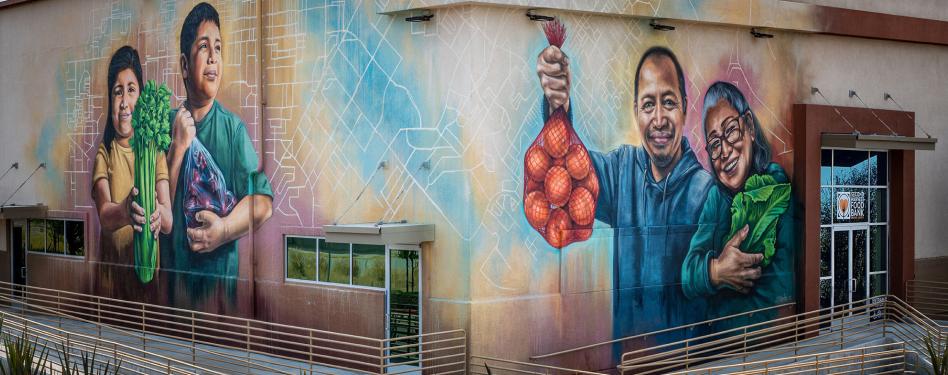
Feature image photo credit: Second Harvest Food Bank of Orange County.
This article was originally posted on Feb. 22, 2024, on USGBC+ as "California food bank tackles hunger with zero waste." Read the full article.
Tons of food is wasted in the United States—80 million tons, to be exact. According to Feeding America, a Chicago-based nonprofit, that means 38% of all food in the U.S. is wasted. Forty-four million individuals facing hunger never even see a bite of that food.
Hope is not lost when it comes to fighting food waste, though. For example, the U.S. Environmental Protection Agency offers grants to assist “visionary organizations" with achieving their environmental goals—including those that seek to remedy the food waste problem. In the fall of 2023, the U.S. Department of Agriculture (USDA) announced a $25 million dollar investment to further bolster projects that prevent and reduce food loss and waste. The money will specifically expand core programs of the USDA’s National Institute of Food and Agriculture, which has committed roughly $123 million across 527 projects related to food loss and waste since 2017.
Those on the local level are waging war against food waste too, especially at Irvine, California’s own Second Harvest Food Bank of Orange County. This food bank is tackling food insecurity, social inequity and environmental stewardship with zero waste efforts that have earned the organization a TRUE certification—rendering Orange County’s Second Harvest branch the first food bank in the world to achieve this feat.
“Our staff was thrilled,” says Chrislynn VanSkiver, the chief operating officer of Second Harvest’s Orange County branch. A TRUE case study confirms this, listing the involvement of 95 staff members in the years-long zero waste undertaking as one of the biggest wins to come out of certification endeavors.
The team’s first conversations around zero waste began at the end of 2020. VanSkiver explains that as staff evaluated how to work on making the food bank’s operations more sustainable, it became clear that TRUE was the best structure for the organization to use as it sought to enact change. TRUE helped guide the food bank in a methodical way, giving Second Harvest of Orange County the “ability to stair-step our reduction in waste,” VanSkiver says.